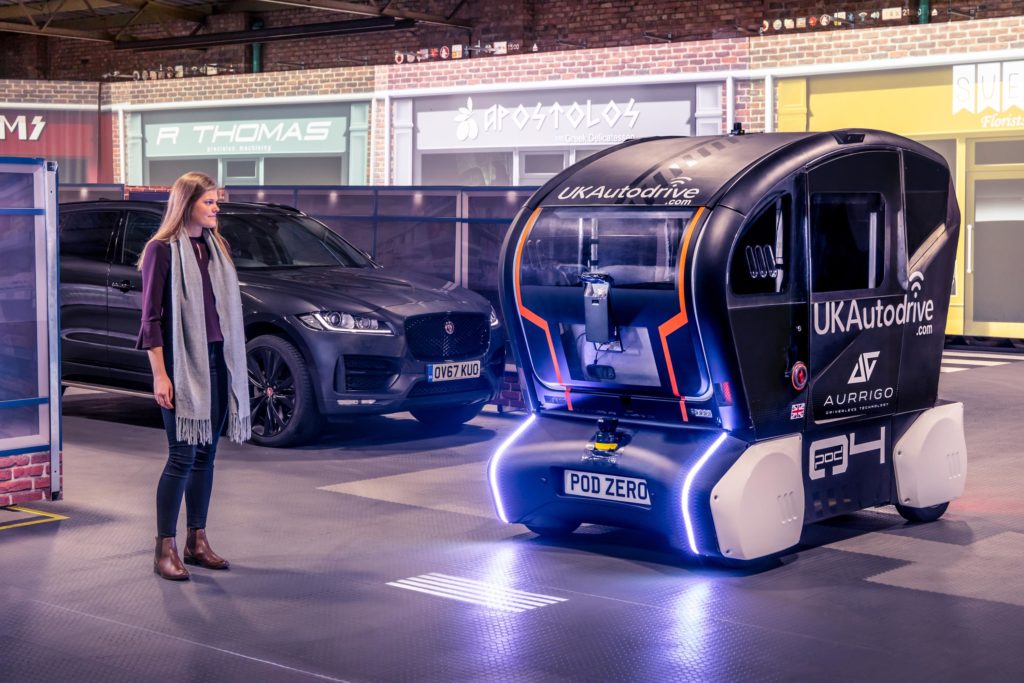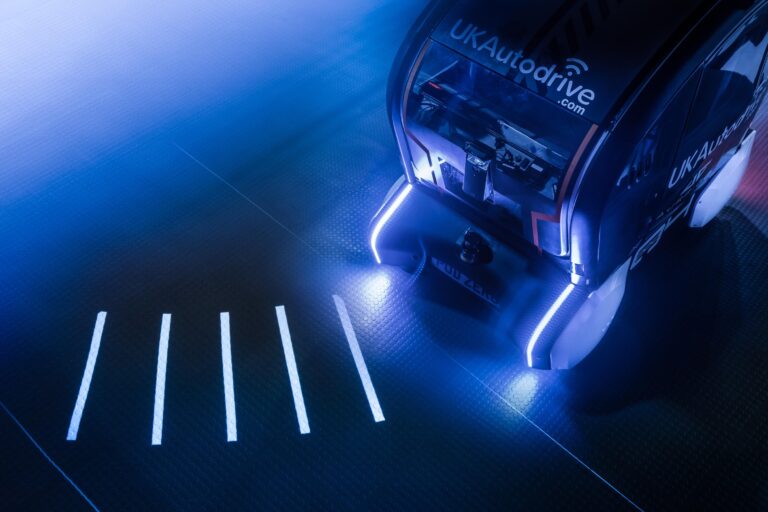Being able to communicate with pedestrians is one of the biggest challenges faced in the development of self-driving cars. Jaguar Land Rover has developed a system that projects images and lights onto the road ahead to indicate the vehicle’s direction of travel as well as when it’s about to pull away or stop.
As part of JLR’s commitment to autonomous vehicle technology development, the car manufacturer has been trialling the intelligent technology using driverless pods created by Aurrigo. A video of the technology in action shows the vehicle project a series of lines onto the road surface that adjust in spacing in relation to its speed. The gaps shorten as the pod is preparing to brake before fully compressing at a stop. As the pod moves off and accelerates, the spacing between the lines extends. Upon approaching a turn, the bars fan out left or right to indicate the direction of travel.

The system was tested on a fabricated street scene at a facility in Coventry, UK, with engineers able to use the data to record trust levels from the pedestrian, which may be an issue for driverless cars after studies showed 41 percent of drivers and pedestrians are worried about sharing the road with autonomous vehicles.
“The trials are about understanding how much information a self-driving vehicle should share with a pedestrian to gain their trust. Just like any new technology, humans have to learn to trust it, and when it comes to autonomous vehicles, pedestrians must have confidence they can cross the road safely. This pioneering research is forming the basis of ongoing development into how self-driving cars will interact with people in the future,” said Pete Bennett, future mobility research manager at Jaguar Land Rover.


